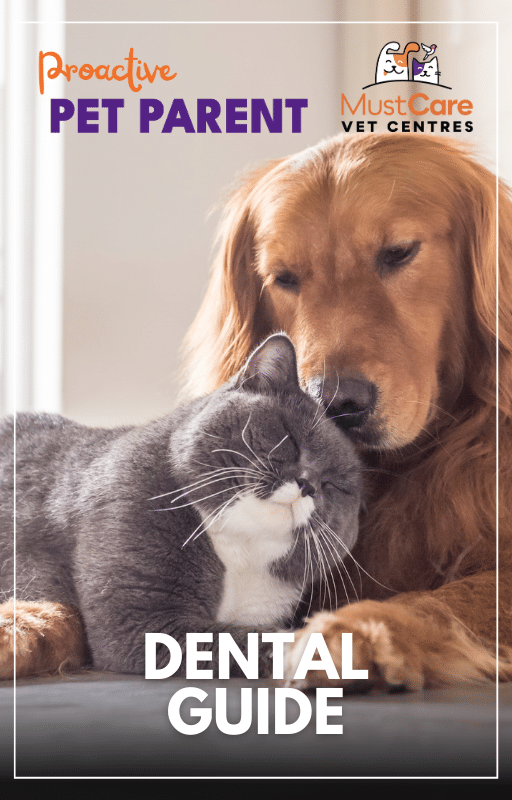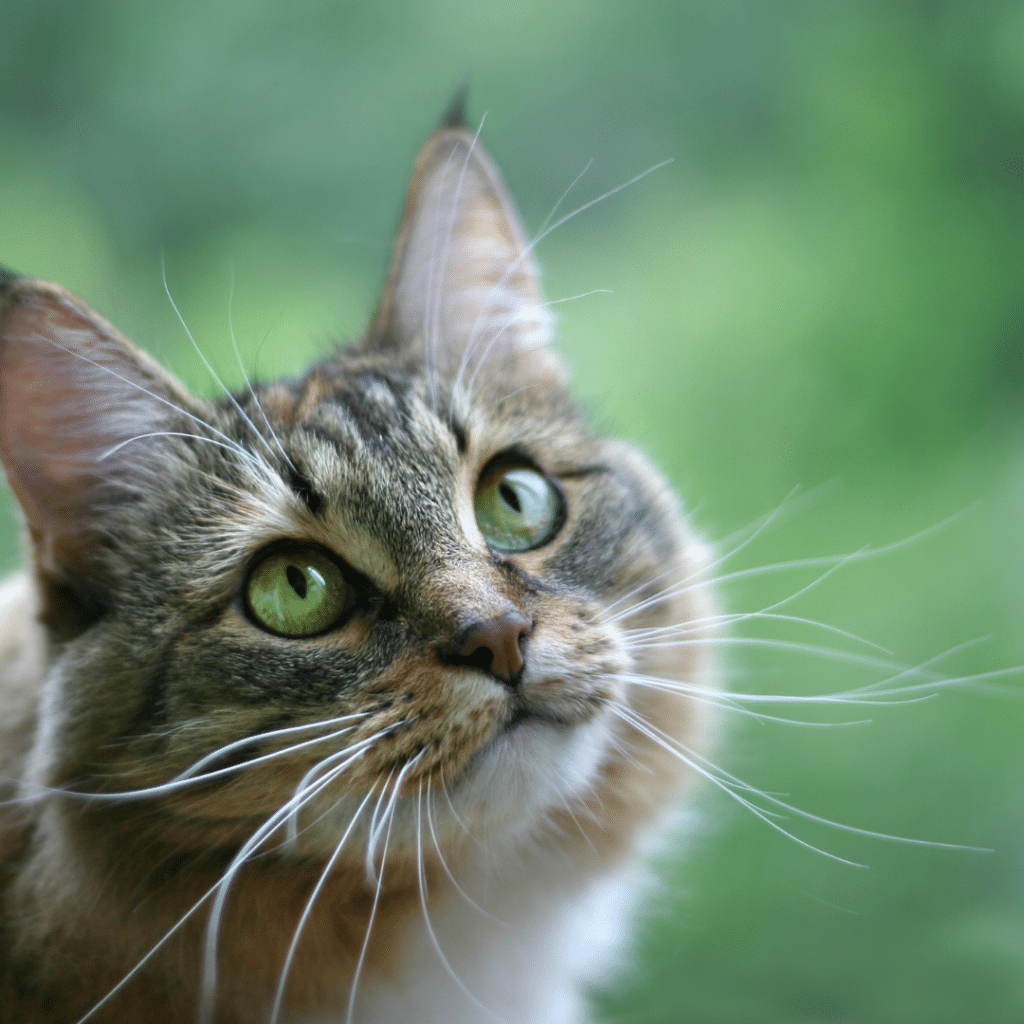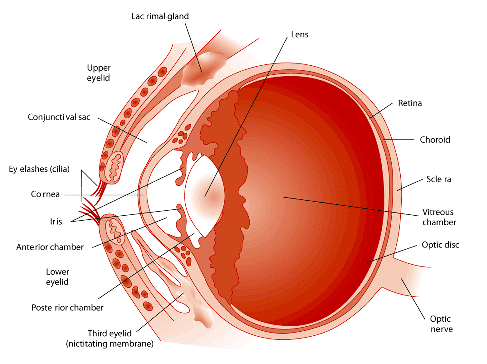Share This Blog With Other Pet Parents!
Through the Eyes of a Cat: Understanding Common Eye Problems in Feline Friends
Are you noticing unusual behaviours in your feline companion? Perhaps you’ve caught them squinting or pawing at their eyes more frequently? As cat owners, we understand the deep bond we share with our furry friends, and their well-being is paramount.
In this article, we delve into a topic often overlooked: cat eye health. From recognising common cat eye issues to proactive measures for maintaining optimal feline eye health, we’ll guide you through the essential steps to ensure your cat’s vision remains clear and bright.
What you’ll learn from this blog:

For all you need to know, download our
FREE Dental Guide
This blog is part of our Proactive Pet Parent series! This is just the beginning… To see more blogs, click here! Better yet, sign-up to our newsletter to receive these directly to your inbox each month.
Sign-up To The Proactive Pet Parent Newsletter
Understanding Cat Eye Anatomy
Understanding the anatomy of a cat’s eye is fundamental to comprehending potential eye issues that may arise. The structure of a cat’s eye is both intricate and fascinating. The outermost layer, known as the cornea, acts as a protective barrier, shielding the inner components from harm.
Beneath the cornea lies the iris, which controls the size of the pupil, regulating the amount of light entering the eye. The lens, located behind the iris, focuses incoming light onto the retina, a light-sensitive layer at the back of the eye responsible for converting light into signals that the brain interprets as vision. Cats possess a specialised reflective layer behind the retina called the tapetum lucidum, enhancing their night vision capabilities by reflecting light back through the retina.
Understanding these key components allows cat owners to appreciate the complexity of their pet’s visual system and recognise abnormalities that may indicate underlying issues.
Common Cat Eye Issues
Cat eye problems can manifest in various forms, each requiring attentive observation and prompt action.
- One common issue among cats is conjunctivitis, characterised by redness, swelling, and discharge from the eye.
- Corneal ulcers, caused by scratches or trauma to the cornea, can lead to pain and discomfort if left untreated.
- Additionally, cats are susceptible to eye infections, with feline herpesvirus being a common culprit, resulting in symptoms such as watery eyes and sneezing.
- Glaucoma, a condition characterised by increased pressure within the eye, can lead to vision loss if not managed properly.
- Furthermore, cataracts, although less common in cats than in dogs, can still occur and may require surgical intervention to restore vision.
Recognising these common cat eye issues is crucial for cat owners to provide timely care and alleviate their pets’ discomfort.
Causes and Risk Factors
Several factors can contribute to the development of cat eye issues, ranging from environmental influences to genetic predispositions.
- Environmental factors such as exposure to irritants like dust, smoke, or chemicals can increase the likelihood of conjunctivitis or other eye infections.
- Trauma, such as scratches or injuries to the eye, can lead to corneal ulcers or other damage requiring veterinary intervention.
- Additionally, underlying health conditions such as feline herpesvirus or other infectious diseases can weaken the immune system, making cats more susceptible to eye infections.
- Age also plays a role, with older cats being more prone to conditions like glaucoma and cataracts due to natural degeneration of eye tissues over time.
- Furthermore, certain breeds may have genetic predispositions to specific eye issues, highlighting the importance of understanding a cat’s breed history when assessing potential risks.
By identifying and addressing these various causes and risk factors, cat owners can take proactive measures to minimise the likelihood of their pets developing eye problems and ensure their long-term ocular health.
Diagnosis and Treatment
Diagnosing cat eye issues requires a thorough examination by a qualified veterinarian. During the examination, the vet may perform various tests to assess the cat’s eye health, including visual inspection, measurement of intraocular pressure, and examination of the eye’s anterior and posterior segments.
Depending on the findings, further diagnostic tests such as tear film evaluation or corneal staining may be necessary to pinpoint the underlying cause of the issue. Once a diagnosis is made, the vet will recommend an appropriate treatment plan tailored to the specific condition.
Treatment options may include topical medications such as eye drops or ointments to alleviate symptoms and combat infection, oral medications for systemic conditions, or surgical interventions for more severe cases. Your veterinarian will help you identify which treatment option is right for your pet, and if needed, provide you with a referral for an animal eye specialist (known as an Ophthalmologist).
It’s essential for cat owners to follow the vet’s recommendations closely and administer medications as prescribed to ensure optimal outcomes. Additionally, regular follow-up appointments may be necessary to monitor progress and adjust the treatment plan as needed. By partnering with their veterinarian and adhering to the prescribed treatment regimen, cat owners can help their pets overcome eye issues and maintain good ocular health in the long run.
Preventative Treatment
Preventing cat eye issues begins with proactive care and maintenance such as:
- Regular eye inspections at home can help cat owners detect any abnormalities early on, such as redness, discharge, or cloudiness in the eyes.
- Keeping the environment clean and free from potential irritants, such as dust or smoke, can also reduce the risk of eye infections.
- Providing a balanced diet rich in essential nutrients, particularly those beneficial for eye health, can support overall ocular wellness.
- Additionally, ensuring regular veterinary check-ups allow for early detection of any underlying health issues that may affect the eyes.
- Cat owners should also take steps to minimise their cat’s exposure to potential hazards, such as sharp objects or aggressive play with other pets, to prevent traumatic eye injuries.
- Cat owners should seek veterinary care if they notice any changes in their cat’s behaviour or activity levels, as these could be indicative of underlying health issues affecting the eyes.
By incorporating these preventive measures into their routine care regimen, cat owners can help maintain their pet’s eye health and reduce the likelihood of encountering common eye problems in the future.
Each cat is unique, and there’s always more to learn about their individual needs and preferences. To speak to a MustCare Vets veterinarian about your cat’s eye health, contact us today.


